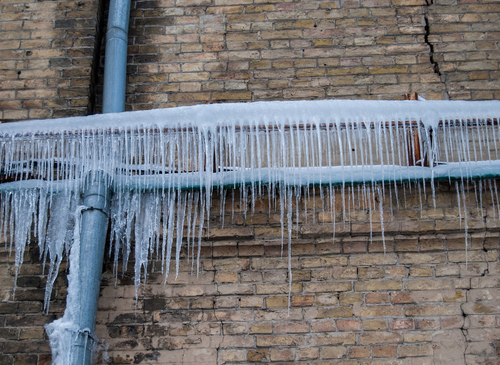The author is making several great points on How To Avoid Freezing Pipes overall in this article following next.

Winter can damage your plumbing, especially by freezing pipes. Below's how to avoid it from occurring and what to do if it does.
Intro
As temperatures decline, the danger of frozen pipes increases, possibly causing pricey repair services and water damages. Understanding exactly how to avoid icy pipes is important for homeowners in cold climates.
Avoidance Tips
Protecting at risk pipes
Cover pipes in insulation sleeves or use heat tape to secure them from freezing temperature levels. Concentrate on pipelines in unheated or exterior locations of the home.
Home heating strategies
Maintain indoor areas adequately heated, particularly areas with pipes. Open cupboard doors to permit cozy air to distribute around pipes under sinks.
Exactly how to identify frozen pipelines
Try to find decreased water flow from taps, unusual odors or noises from pipelines, and noticeable frost on subjected pipes.
Long-Term Solutions
Architectural modifications
Consider rerouting pipes away from exterior wall surfaces or unheated areas. Include extra insulation to attic rooms, cellars, and crawl spaces.
Updating insulation
Invest in top notch insulation for pipelines, attics, and walls. Proper insulation aids preserve regular temperatures and decreases the danger of frozen pipes.
Securing Exterior Pipes
Yard pipes and outdoor faucets
Disconnect and drain garden hose pipes before winter months. Mount frost-proof faucets or cover exterior faucets with protected caps.
Recognizing Icy Pipelines
What triggers pipes to ice up?
Pipes freeze when exposed to temperature levels below 32 ° F (0 ° C) for expanded durations. As water inside the pipes freezes, it expands, taxing the pipe walls and potentially causing them to rupture.
Risks and damages
Icy pipelines can lead to water disruptions, residential property damage, and costly repairs. Burst pipelines can flood homes and trigger comprehensive structural damages.
Signs of Frozen Water Lines
Recognizing frozen pipes early can stop them from rupturing.
What to Do If Your Pipelines Freeze
Immediate activities to take
If you suspect frozen pipelines, keep faucets open up to eliminate stress as the ice melts. Utilize a hairdryer or towels taken in hot water to thaw pipelines gradually.
Conclusion
Stopping icy pipes requires positive procedures and quick reactions. By comprehending the reasons, signs, and safety nets, homeowners can safeguard their plumbing throughout cold weather.
5 Ways to Prevent Frozen Pipes
Drain Outdoor Faucets and Disconnect Hoses
First, close the shut-off valve that controls the flow of water in the pipe to your outdoor faucet. Then, head outside to disconnect and drain your hose and open the outdoor faucet to allow the water to completely drain out of the line. Turn off the faucet when done. Finally, head back to the shut-off valve and drain the remaining water inside the pipe into a bucket or container. Additionally, if you have a home irrigation system, you should consider hiring an expert to clear the system of water each year.
Insulate Pipes
One of the best and most cost-effective methods for preventing frozen water pipes is to wrap your pipes with insulation. This is especially important for areas in your home that aren’t exposed to heat, such as an attic. We suggest using foam sleeves, which can typically be found at your local hardware store.
Keep Heat Running at 65
Your pipes are located inside your walls, and the temperature there is much colder than the rest of the house. To prevent your pipes from freezing, The Insurance Information Institute suggests that you keep your home heated to at least 65 degrees, even when traveling. You may want to invest in smart devices that can keep an eye on the temperature in your home while you’re away.
Leave Water Dripping
Moving water — even a small trickle — can prevent ice from forming inside your pipes. When freezing temps are imminent, start a drip of water from all faucets that serve exposed pipes. Leaving a few faucets running will also help relieve pressure inside the pipes and help prevent a rupture if the water inside freezes.
Open Cupboard Doors
Warm your kitchen and bathroom pipes by opening cupboards and vanities. You should also leave your interior doors ajar to help warm air circulate evenly throughout your home.

I found that blog posting about 6 Ways to Prevent Frozen Pipes when browsing the web. Those who appreciated our blog post kindly don't forget to share it. I thank you for reading our article about Helpful Tips to Prevent Frozen Pipes this Winter.
Explore